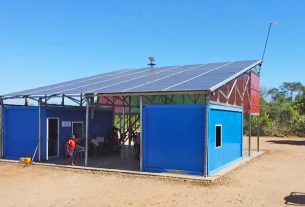A companion bill to the Kids Online Safety Act (KOSA) was introduced in the House last month. Despite minor changes, it suffers from the same fundamental flaws as its Senate counterpart. At its core, this bill is still an unconstitutional censorship bill that restricts protected online speech and gives the government the power to target services and content it finds objectionable. Here, we break down why the House version of KOSA is just as dangerous as the Senate version, and why it’s crucial to continue opposing it.
Core First Amendment Problems Persist
EFF has consistently opposed KOSA because, through several iterations of the Senate bill, it continues to open the door to government control over what speech content can be shared and accessed online. Our concern, which we share with others, is that the bill’s broad and vague provisions will force platforms to censor legally protected content and impose age-verification requirements. The age verification requirements will drive away both minors and adults who either lack the proper ID, or who value their privacy and anonymity.
The House version of KOSA fails to resolve these fundamental censorship problems.
THE “KIDS ONLINE SAFETY ACT” ISN’T SAFE FOR KIDS OR ADULTS
Dangers for Everyone, Especially Young People
One of the key concerns with KOSA has been its potential to harm the very population it aims to protect—young people. KOSA’s broad censorship requirements would limit minors’ access to critical information and resources, including educational content, social support groups, and other forms of legitimate speech. This version does not alleviate that concern. For example, this version of KOSA could still:
- Suppress search results for young people seeking sexual health and reproductive rights information;
- Block content relevant to the history of oppressed groups, such as the history of slavery in the U.S;
- Stifle youth activists across the political spectrum by preventing them from connecting and advocating on their platforms; and
- Block young people seeking help for mental health or addiction problems from accessing resources and support.
As thousands of young people have told us, these concerns are just the tip of the iceberg. Under the guise of protecting them, KOSA will limit minors’ ability to self-explore, to develop new ideas and interests, to become civically engaged citizens, and to seek community and support for the very harms KOSA ostensibly aims to prevent.
What’s Different About the House Version?
Although there are some changes in the House version of KOSA, they do little to address the fundamental First Amendment problems with the bill. We review the key changes here.
1. Duty of Care Provision
We’ve been vocal about our opposition to KOSA’s “duty of care” censorship provision. This section outlines a wide collection of harms to minors that platforms have a duty to prevent and mitigate by exercising “reasonable care in the creation and implementation of any design feature” of their product. The list includes self-harm, suicide, eating disorders, substance abuse, depression, anxiety, and bullying, among others. As we’ve explained before, this provision would cause platforms to broadly over-censor the internet so they don’t get sued for hosting otherwise legal content that the government—in this case the FTC—claims is harmful.
The House version of KOSA retains this chilling effect, but limits the “duty of care” requirement to what it calls “high impact online companies,” or those with at least $2.5 billion in annual revenue or more than 150 million global monthly active users. So while the Senate version requires all “covered platforms” to exercise reasonable care to prevent the specific harms to minors, the House version only assigns that duty of care to the biggest platforms.
While this is a small improvement, its protective effect is ultimately insignificant. After all, the vast majority of online speech happens on just a handful of platforms, and those platforms—including Meta, Snap, X, WhatsApp, and TikTok—will still have to uphold the duty of care under this version of KOSA. Smaller platforms, meanwhile, still face demanding obligations under KOSA’s other sections. When government enforcers want to control content on smaller websites or apps, they can just use another provision of KOSA—such as one that allows them to file suits based on failures in a platform’s design—to target the same protected content.
2. Tiered Knowledge Standard
Because KOSA’s obligations apply specifically to users who are minors, there are open questions as to how enforcement would work. How certain would a platform need to be that a user is, in fact, a minor before KOSA liability attaches? The Senate version of the bill has one answer for all covered platforms: obligations attach when a platform has “actual knowledge” or “knowledge fairly implied on the basis of objective circumstances” that a user is a minor. This is a broad, vague standard that would not require evidence that a platform actually knows a user is a minor for it to be subject to liability.
The House version of KOSA limits this slightly by creating a tiered knowledge standard under which platforms are required to have different levels of knowledge based on the platform’s size. Under this new standard, the largest platforms—or “high impact online companies”—are required to carry out KOSA’s provisions with respect to users they “knew or should have known” are minors. This, like the Senate version’s standard, would not require proof that a platform actually knows a user is a minor for it to be held liable. Mid-sized platforms would be held to a slightly less stringent standard, and the smallest platforms would only be liable where they have actual knowledge that a user was under 17 years old.
While, again, this change is a slight improvement over the Senate’s version, the narrowing effect is small. The knowledge standard is still problematically vague, for one, and where platforms cannot clearly decipher when they will be liable, they are likely to implement dangerous age verification measures anyway to avoid KOSA’s punitive effects.
Most importantly, even if the House’s tinkering slightly reduces liability for the smallest platforms, this version of the bill still incentivizes large and mid-size platforms—which, again, host the vast majority of all online speech—to implement age verification systems that will threaten the right to anonymity and create serious privacy and security risks for all users.
3. Exclusion for Non-Interactive Platforms
The House bill excludes online platforms where chat, comments, or interactivity is not the predominant purpose of the service. This could potentially narrow the number of platforms subject to KOSA’s enforcement by reducing some of the burden on websites that aren’t primarily focused on interaction.
However, this exclusion is legally problematic because its unclear language will again leave platforms guessing as to whether it applies to them. For instance, does Instagram fall into this category or would image-sharing be its predominant purpose? What about TikTok, which has a mix of content-sharing and interactivity? This ambiguity could lead to inconsistent enforcement and legal challenges—the mere threat of which tend to chill online speech.
4. Definition of Compulsive Usage
Finally, the House version of KOSA also updates the definition of “compulsive usage” from any “repetitive behavior reasonably likely to cause psychological distress” to any “repetitive behavior reasonably likely to cause a mental health disorder,” which the bill defines as anything listed in the Diagnostic and Statistical Manual of Mental Disorders, or DSM. This change pays lip service to concerns we and many others have expressed that KOSA is overbroad, and will be used by state attorneys general to prosecute platforms for hosting any speech they deem harmful to minors.
However, simply invoking the name of the healthcare professionals’ handbook does not make up for the lack of scientific evidence that minors’ technology use causes mental health disorders. This definition of compulsive usage still leaves the door open for states to go after any platform that is claimed to have been a factor in any child’s anxiety or depression diagnosis.
KOSA Remains a Censorship Threat
Despite some changes, the House version of KOSA retains its fundamental constitutional flaws. It encourages government-directed censorship, dangerous digital age verification, and overbroad content restrictions on all internet users, and further harms young people by limiting their access to critical information and resources.
Lawmakers know this bill is controversial. Some of its proponents have recently taken steps to attach KOSA as an amendment to the five-year reauthorization of the Federal Aviation Administration, the last “must-pass” legislation until the fall. This would effectively bypass public discussion of the House version. Just last month Congress attached another contentious, potentially unconstitutional bill to unrelated legislation, by including a bill banning TikTok inside of a foreign aid package. Legislation of this magnitude deserves to pass—or fail—on its own merits.
We continue to oppose KOSA—in its House and Senate forms—and urge legislators to instead seek alternatives such as comprehensive federal privacy law that protect young people without infringing on the First Amendment rights of everyone who relies on the internet.


